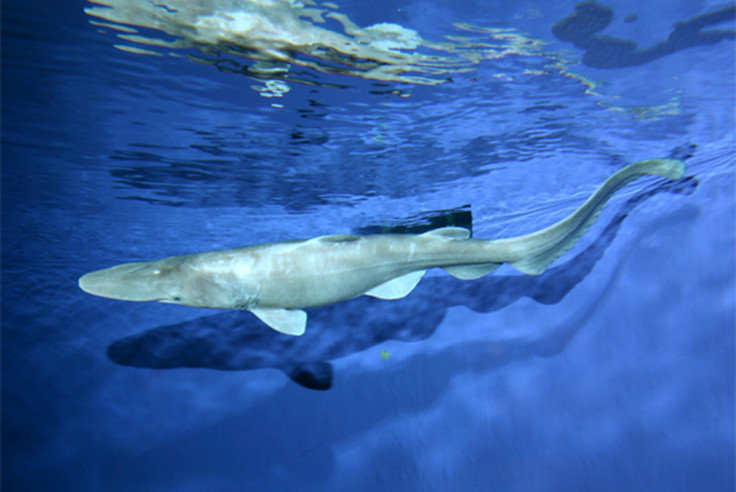Rare 18-Foot Goblin Shark Caught Off Florida Coast Is A ‘Living Fossil’ [PHOTOS]

Fishermen trawling for shrimp off the coast of Key West, Florida, were surprised when they hauled in an enormous 18-foot goblin shark, a deep-sea creature that is rarely seen by humans and that scientists know very little about.
The encounter occurred on April 19, but longtime fisherman Carl Moore didn’t report it to the National Oceanic and Atmospheric Administration Fisheries Service, or NOAA, until Thursday. After snapping a few photos of the unusual shark, Moore returned it to the water.
The goblin shark, distinguished by its bizarre snout and fleshy pink skin and often referred to as a living fossil because its lineage is thought to go back some 125 million years, is something of a biological mystery. A goblin shark has appeared only one other time in the Gulf of Mexico, in 2002.
They are sometimes caught as bycatch in deep sea fisheries. Moore’s nets extended 2,000 feet below the surface.
"The guys at NOAA said I'm probably one of only 10 people who've seen one of those alive," Moore told the Houston Chronicle. "That's my ocean out there and anything in it concerns me … I know the value of trying to preserve things.”
Marine biologist David Shiffman, who blogs about shark conservation, posted photos of the creature to Twitter:
FL fisherman catches an 18-foot goblin shark, the second-ever caught in the Gulf of Mexico: http://t.co/6UXBRDYxgv pic.twitter.com/9DwBwOjvpe
— David Shiffman (@WhySharksMatter) May 3, 2014And it's definitely really big. pic.twitter.com/BZjx8431Rp
— David Shiffman (@WhySharksMatter) May 1, 2014Goblin sharks were discovered in the late 19th century, but remained an enigma to scientists until more recently. They are normally spotted near Japan, in the Indian Ocean or around South Africa, according to the Houston Chronicle, but are thought to inhabit oceans throughout the world at depths greater than 330 feet.
Scientists believe the shark’s pink skin renders the animal nearly invisible in deep waters because the color appears black in low lighting – an ideal disguise for catching its prey off guard.
The goblin shark has a flabby body and small fins, which suggest it can’t move very fast in the wild. Its snout is peppered with tiny sensors that detect small electrical currents emitted from living things. The shark uses this feature like a metal detector to scour the ocean floor for its prey: small fish, cephalopods and crustaceans. According to Discovery, it can sense charges as little as one-ten-millionth of a volt.
When it feeds, the goblin shark extends its jaw forward, quickly snatching its prey and pulling it towards it.
© Copyright IBTimes 2024. All rights reserved.






















